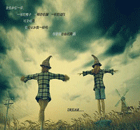Asia-Pacific
Author J.D. Salinger died at age 91
(Agencies)
Updated: 2010-01-29 03:06
 |
Large Medium Small |
NEW YORK: J.D. Salinger, the legendary author, youth hero and fugitive from fame whose "The Catcher in the Rye" shocked and inspired a world he increasingly shunned, has died. He was 91.
|
 In this 1951 file photo, J.D. Salinger, author of 'The Catcher in the Rye', 'Nine Stories', and 'Franny and Zooey' is shown. [Agencies] |
"The Catcher in the Rye," with its immortal teenage protagonist, the twisted, rebellious Holden Caulfield, came out in 1951, a time of anxious, Cold War conformity and the dawn of modern adolescence. The Book-of-the-Month Club, which made "Catcher" a featured selection, advised that for "anyone who has ever brought up a son" the novel will be "a source of wonder and delight - and concern."
Enraged by all the "phonies" who make "me so depressed I go crazy," Holden soon became American literature's most famous anti-hero since Huckleberry Finn. The novel's sales are astonishing - more than 60 million copies worldwide - and its impact incalculable. Decades after publication, the book remains a defining expression of that most American of dreams - to never grow up.
Salinger was writing for adults, but teenagers from all over identified with the novel's themes of alienation, innocence and fantasy, not to mention the luck of having the last word. "Catcher" presents the world as an ever-so-unfair struggle between the goodness of young people and the corruption of elders, a message that only intensified with the oncoming generation gap.
Novels from Evan Hunter's "The Blackboard Jungle" to Curtis Sittenfeld's "Prep," movies from "Rebel Without a Cause" to "The Breakfast Club," and countless rock 'n' roll songs echoed Salinger's message of kids under siege. One of the great anti-heroes of the 1960s, Benjamin Braddock of "The Graduate," was but a blander version of Salinger's narrator.
The cult of "Catcher" turned tragic in 1980 when crazed Beatles fan Mark David Chapman shot and killed John Lennon, citing Salinger's novel as an inspiration and stating that "this extraordinary book holds many answers."
By the 21st century, Holden himself seemed relatively mild, but Salinger's book remained a standard in school curriculums and was discussed on countless Web sites and a fan page on Facebook.
Salinger's other books don't equal the influence or sales of "Catcher," but they are still read, again and again, with great affection and intensity. Critics, at least briefly, rated Salinger as a more accomplished and daring short story writer than John Cheever.
The collection "Nine Stories" features the classic "A Perfect Day for Bananafish," the deadpan account of a suicidal Army veteran and the little girl he hopes, in vain, will save him. The novel "Franny and Zooey," like "Catcher," is a youthful, obsessively articulated quest for redemption.
"Catcher," narrated from a mental facility, begins with Holden recalling his expulsion from a Pennsylvania boarding school for failing four classes and for general apathy.
He returns home to Manhattan, where his wanderings take him everywhere from a Times Square hotel to a rainy carousel ride with his kid sister, Phoebe, in Central Park. He decides he wants to escape to a cabin out West, but scorns questions about his future as just so much phoniness.
"The Catcher in the Rye" became both required and restricted reading, periodically banned by a school board or challenged by parents worried by its frank language and the irresistible chip on Holden's shoulder.
Salinger also wrote the novellas "Raise High the Roof Beam, Carpenters" and "Seymour - An Introduction," both featuring the neurotic, fictional Glass family which appeared in much of his work.
His last pub a precocious child whose manner had soured from cute to insufferable. "Salinger was the greatest mind ever to stay in prep school," Norman Mailer once commented.







